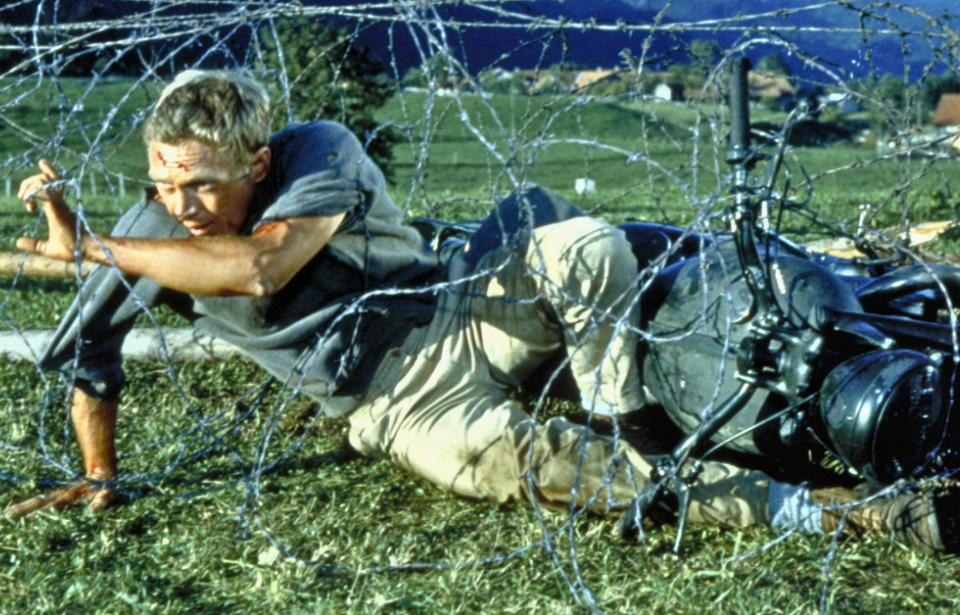Throughout the Second World War, a number of prisoner of war (POW) escape attempts stood out, such as the development of the Colditz Cock and the mass jailbreak at Stalag Luft III. However, it wasn’t just Allied soldiers who sought to flee their captors in creative ways. Hidden away in Wales, a group of officers made the largest German attempt of the war in the United Kingdom, often called the “German Great Escape.”
Building Camp 198

Located in Bridgend, Wales, Island Farm wasn’t originally built as a prisoner of war camp. Constructed in 1938, it was intended to house female munitions workers employed at the Waterton Royal Ordnance Factory. They hardly used it, however; it turned out to be such a depressing place that they opted to travel long distances to work daily, instead of staying at the hostel overnight.
The location stayed empty for years, until the American forces took it over in advance of D-Day. They used it to house troops stationed in the UK. After the Allied landings in Normandy, the camp was, again, briefly empty, until it was marked as an ideal location to house the growing number of POWs being taken during the liberation of Europe.
Island Farm was renamed “Camp 198,” and the first group of prisoners were employed to add barbed wire around the perimeter.
Arrival of prisoners of war (POWs)
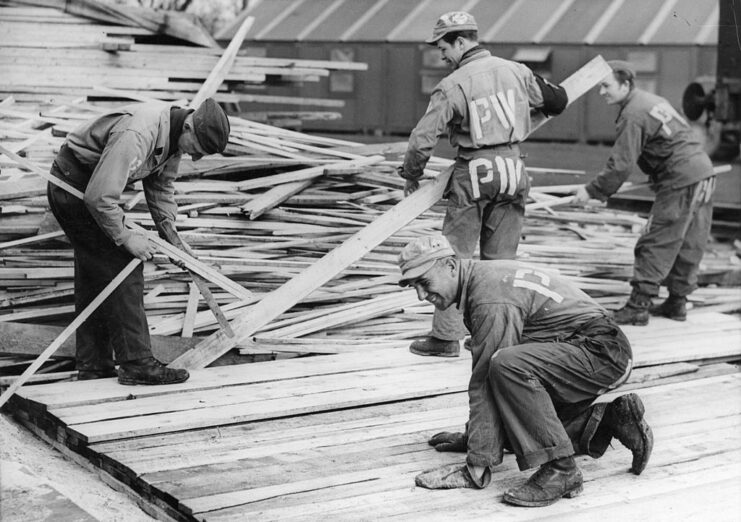
Camp 198 was quite large and could hold roughly 2,000 men. The first to arrive and complete the conversions were regular German and Italian troops. They weren’t there long before it was decided the camp was too nice for soldiers of their caliber. Instead, it was re-designated to hold German officers, the first of whom arrived in November 1944.
Perhaps to be expected, it didn’t take long for these men to try and escape. They set to work digging two tunnels to take them underneath the barbed wire perimeter. Guards uncovered the first in January 1945, accurately believing it was a diversionary tunnel. However, they couldn’t find the real one.
It was this Hut 9 tunnel that was used for a mass escape only a few months later. The POWs made it 30 feet long, enough to reach the “outside world.” The men resorted to makeshift tools to dig, such as cans and bread knives.
‘German Great Escape’
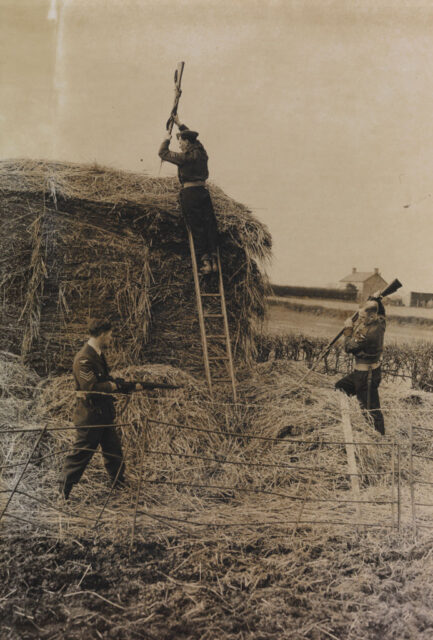
The German prisoners of war had to dispose of all the soil they removed from the tunnels. To do so, they carried small amounts in their pockets or bags. They somehow stole wooden benches from the cafeteria without anyone noticing and used them, along with bed posts, to support the roof. They also rigged lighting and created ventilation from a series of milk tins and a fan. To help drown out the digging noise, the men formed a choir that conveniently held rehearsals next door.
Around 10:00 PM on March 10, 1945, 70 prisoners got out through the tunnel, using curry powder to mask their scent from the guard dogs. Author Peter Phillips says it was actually 84, but since 14 were captured rather quickly, Camp 198 was able to say it was only 70 who’d gotten out.
The POWs made their move out of the tunnel working in small groups. Each had a compass, a handmade map and false identity papers claiming they were Norwegian engineers.
Special Camp XI
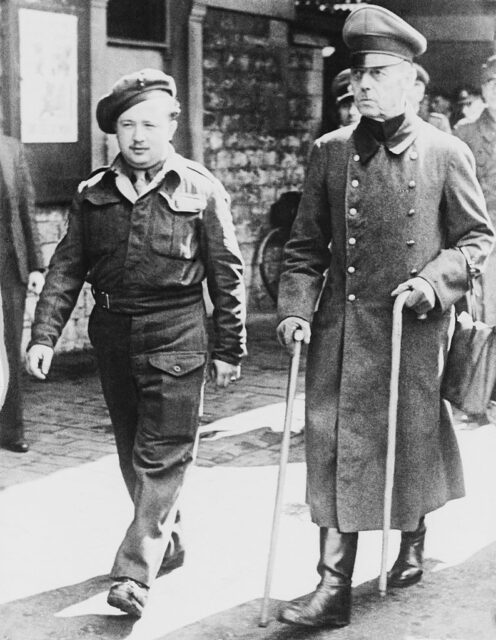
One group stole a doctor’s car and even got the help of three passing British soldiers when they couldn’t get it to start. Despite the elaborate planning that went into the escape plan, their bold move was ultimately unsuccessful. Official reports say all of the men were captured and brought back to Camp 198. As with the total number of escapees, Phillips disagrees, saying three were never found.
Regardless, the camp was never the same again.
Three weeks later, the officer population of 1,600 was moved elsewhere. The facility was renamed “Special Camp XI,” serving as a holding location for 160 high-ranking German officers, many of whom were close to the Führer. They were held at the site during the Nuremberg Trials. Perhaps the best-known was Field Marshal Gerd von Rundstedt, who’d commanded different sections of the Wehrmacht during the invasion of France and D-Day.
Archaeological excavation
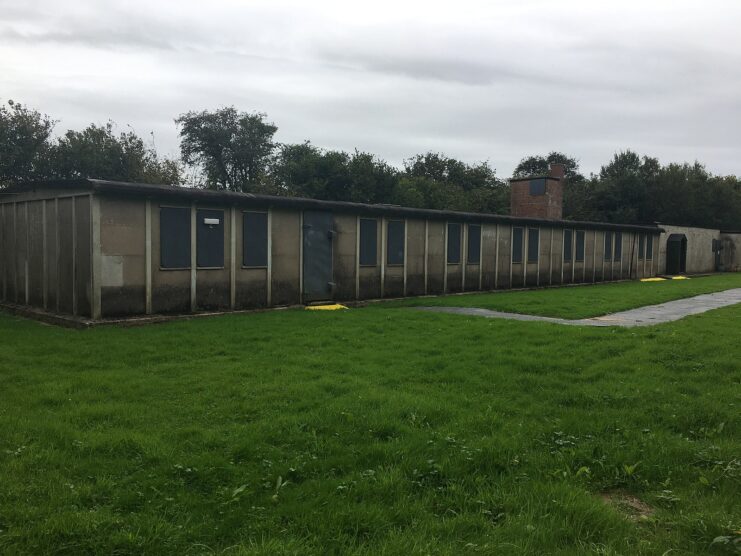
Special Camp XI was closed in 1948, when the remaining prisoners were returned home. It remained largely forgotten until 2013, when a team of researchers from various universities conducted a study of the site to find the infamous escape tunnel.
Hut 9 was still in surprisingly good condition, considering the state of the rest of the camp – the researchers could even see the graffiti the German POWs drew while held there. It also contained the false wall created in the showers to hide the equipment used to dig the tunnel. The only thing that wasn’t in its original condition was the entrance to the tunnel itself, which had been covered with concrete.
More from us: Emotional Drone Footage of Margraten American Cemetery
Following further investigation using different technologies, the team found the tunnel was still there. It was in fairly good shape and held up by the wooden support beams the prisoners had originally used.
